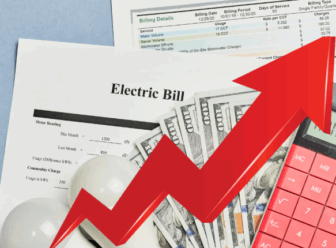Hopefully the resolution will pass in a strong form, but sea level rise is not the only negative effect of Virginia relying on fossil fuels. Coal-burning power plants not only put out greenhouse gases, they emit heavy metals that contaminate water and make fish from local rivers unsafe to eat. They cause asthma and disproportionately affect lower income and minority Virginians with the health effects of living in polluted communities downwind of these toxic facilities.
Returning to the conclusions that the Governor’s Commission on Climate Change made, we need to think hard about what our energy system is doing to our coastal areas and what we need to do differently. Then we’ll address a big cause of sea level rise, and a host of other problems, and not just treat a symptom.

Locals are familiar with the problems—rising water, flooded roads, monitoring the lunar cycle just to know where to safely park your car, powerful storm surges worsening, beaches eroding, and so on. The Navy has spent millions recently to retrofit docks. Some Norfolk neighborhoods could be entirely submerged by 2100, the result of relative sea-level rise of between 2.3 feet and 5.2 feet.
Slow-sinking land and rising waters are now unignorable. Hopefully, Virginia legislators are taking the first step toward producing a coordinated plan to mitigate the effects of rising sea level in coastal Virginia. A resolution introduced with bipartisan support in the General Assembly would ask VIMS, the Virginia Institute of Marine Science, to perform a study to list out what has been done to address sea level rise in the region and determine what more there is to do, partly funded by VIMS and partly by the state.
Purely as a strategy for disaster preparedness, a study like this is needed. Let’s go a little further, though. It is worth noting that while part of the reason why water levels are rising in Norfolk, Hampton, Poquoson and Gloucester is localized land movement, the result of an asteroid impact 35 million years in the past, global sea level rise caused by climate change is also impacting Hampton Roads.

A a refresher on the science, global temperatures are rising due to the presence of exponentially elevated levels of carbon dioxide in the atmosphere. The earth is heating with a more exaggerated effect on the poles, and land-based ice sheets are melting and adding water to the oceans. Parts of the Antarctic and Greenland are being closely watched, because if large parts of the ice sheet break off it will cause the sea to advance a significant distance farther onto the land worldwide.
This proposed VIMS study is needed and hopefully the resolution will pass in a strong form, but sea level rise is not the only negative effect of Virginia relying on fossil fuels. Coal-burning power plants not only put out greenhouse gases, they emit heavy metals that contaminate water and make fish from local rivers unsafe to eat. They cause asthma and disproportionately affect lower income and minority Virginians with the health effects of living in polluted communities downwind of these toxic facilities.
Returning to the conclusions that the Governor’s Commission on Climate Change made, we need to think hard about what our energy system is doing to our coastal areas and what we need to do differently. Then we’ll address a big cause of sea level rise, and a host of other problems, and not just treat a symptom.
PS: The language of the House of Delegates version of the resolution has now been changed to refe![]() r not to “relative sea-level rise” but rather to “recurrent flooding” to avoid controversy and justify the expense of the study. In seeking to respond in a timely way to this ongoing natural disaster, we may be disregarding the role global sea level change in contributing to these local impacts. Just as this study is meant to be comprehensive look at effects all over Hampton Roads, we may have something to learn from looking at effects elsewhere in the world, where low-lying parts of Pakistan and entire nations like Maldives are going underwater.
r not to “relative sea-level rise” but rather to “recurrent flooding” to avoid controversy and justify the expense of the study. In seeking to respond in a timely way to this ongoing natural disaster, we may be disregarding the role global sea level change in contributing to these local impacts. Just as this study is meant to be comprehensive look at effects all over Hampton Roads, we may have something to learn from looking at effects elsewhere in the world, where low-lying parts of Pakistan and entire nations like Maldives are going underwater.





